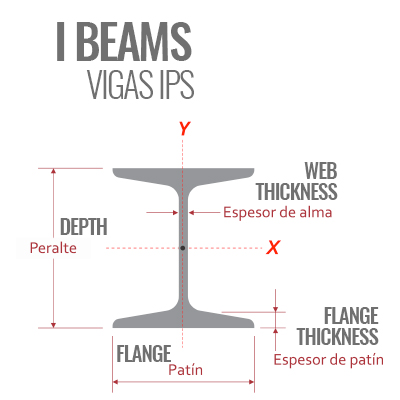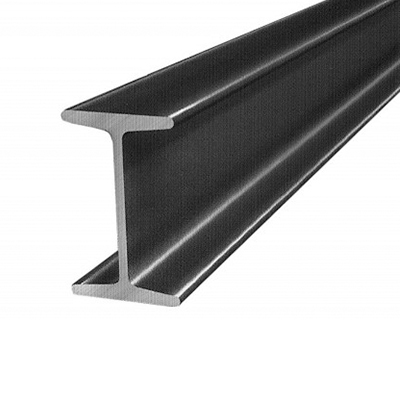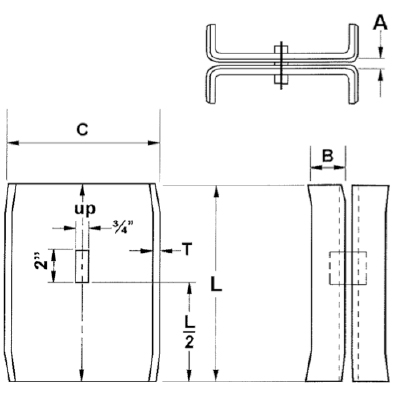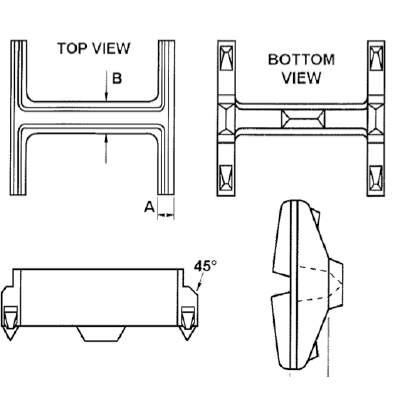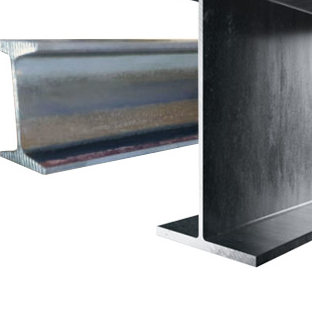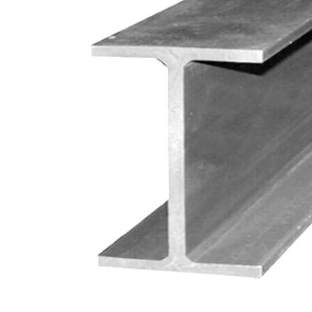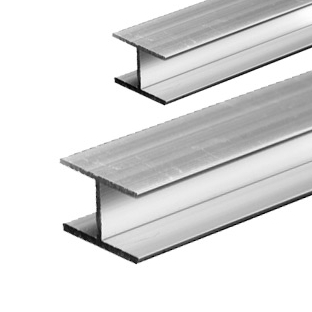Beams come in different shapes and sizes. A construction beam is a structural element that bears load by resisting bending from downward forces. Its horizontal span is much broader than its width or depth. Beams are characterized by their profile, length and material.The most common types resemble a Capital I or a Capital H. They are generally used in construction, civil engineering, heavy machinery, truck construction and other heavy duty tasks. Beam is mostly used to support heavy structures. Beam is available in Aluminum, Stainless Steel and Hot Rolled varieties.
Designation and terminology
•In the United States, steel I-beams are commonly specified using the depth and weight of the beam. For example, a "W10x22" beam is approximately 10 in (25 cm) in depth (nominal height of the I-beam from the outer face of one flange to the outer face of the other flange) and weighs 22 lb/ft (33 kg/m). It should be noted that wide flange section often vary from their nominal depth. In the case of the W14 series, they may be as deep as 22.84 in (58.0 cm).
•In Mexico, steel I-beams are called IR and commonly specified using the depth and weight of the beam in metric terms. For example, a "IR250x33" beam is approximately 250 mm (9.8 in) in depth (height of the I-beam from the outer face of one flange to the outer face of the other flange) and weighs approximately 33 kg/m (22 lb/ft).
How to measure:
Height (A) X Web (B) X Flange Width (C)
M = Steel Junior Beam or Bantam Beam
S = Standar Steel I Beam
W = Standar Wide Flange Beam
H-Pile = H-Pile Beam
W or H Beam
W or H beam is a structural beam made of rolled steel. It is incredibly strong. It gets its name because it looks like a capital H over its cross section. The W or H beam has wider flanges than an I-beam, but the I-beam has tapered edges. The width is the flange, and the height is the Web. The difference between both H-beams and I-beams is the flange by web ratio. The W or H beam tends to be heavier than the I-beam, and that is why some say that it is better than the I-beam, but that is subjective, as the W beam is generally heavier.
Hot Rolled Wide Flange (WF) Beams. Also known as H Beams. Wide Flange Beams are used primarily for support and framework in structural steel construction, most commonly in commercial, industrial, and institutional buildings, bridges, mezzanines and platforms, walers, wallsystems, trailer and truck-bed framing, machine bases, and much more.
Beams are used in the civil construction industry, as foundations or as containing supports for buildings that have numerous floors. They are also used within industry for the construction of warehouses, structural supports for machines and equipment, maritime platforms, overhead cranes and monorails.

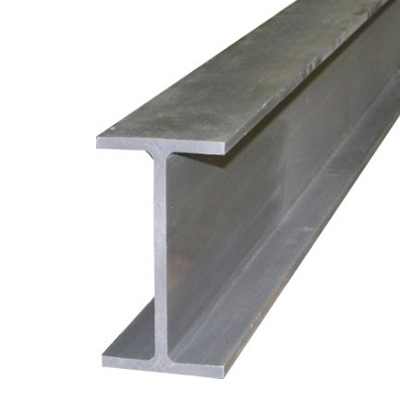
 English
English Español
Español



